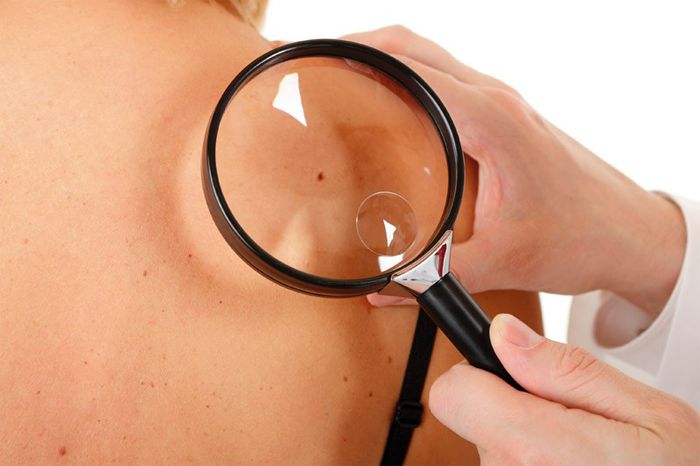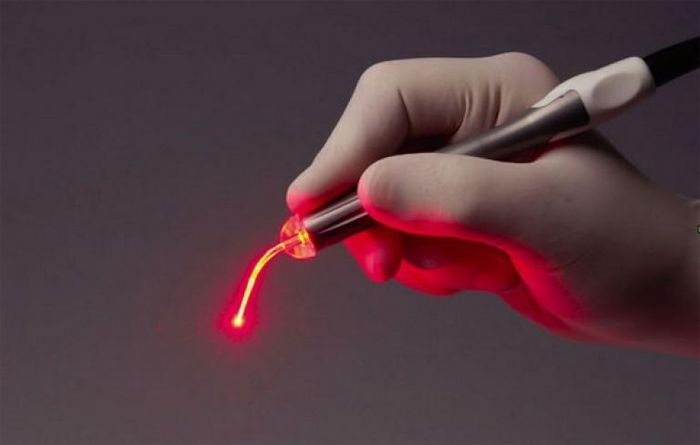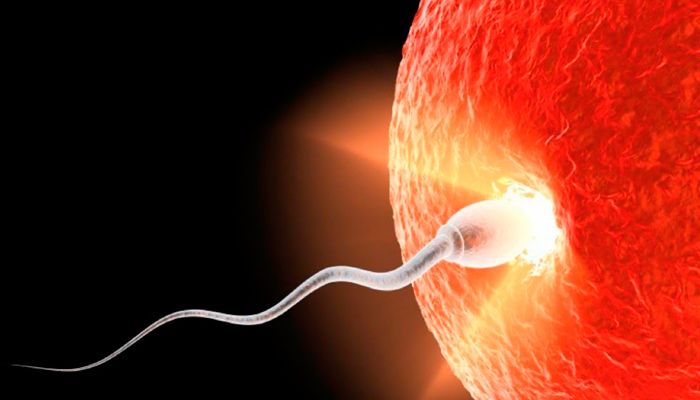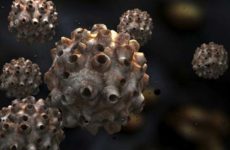Papillomavirus is the most common viral infection of the genital tract, which is faced by the vast majority of the inhabitants of our planet (7 out of 10 people).
Any strain of the papillomavirus leads to a change in the human skin – condylomas, papillomas and other formations appear. The 59 strain of the papillomavirus (HPV 59) has a high oncogenic level, which means that in the presence of provoking factors and certain conditions, this virus can cause cancer.

Timely detection of a dangerous strain of the virus can reduce the risk of developing oncology, therefore, persons in whom this strain of infection has been identified should be under the control of gynecologists, urologists and oncologists.
Содержание:
Causes and symptoms of infection in women and men
Since HPV is a viral disease, in most cases the body copes with it on its own. The main barrier and protector of the body from infectious pathogens is the immune system, when it functions incorrectly or not well enough, viruses freely enter the body and begin to multiply actively.
Scientists have established a number of factors that lead to a decrease in immune defense:
- bad habits – drugs, alcohol, smoking;
- lack of a healthy daily routine – lack of sleep, work at night;
- malnutrition – excessive consumption of salty and fatty foods, a large number of foods with preservatives;
- significant physical and psycho-emotional overload.
Ways of penetration of the papilloma virus:
- Lack of personal hygiene in public places – swimming pools, saunas, baths.
- Transmission of the virus from personal hygiene items – a shared razor or towel.
- Sexual contact with a carrier of the virus is the main mode of transmission of the virus, and it is not necessary for sexual intercourse to be unprotected. Even when using a condom, the risk of transmitting the virus remains.
- The airborne route is a rare mode of transmission of the virus.
- From mother to child – also an infrequent case, the virus can be transmitted to the baby when he passes through the birth canal.

Once in the body, the virus provokes the appearance of skin growths – genital warts, which can be seen visually. However, internal warts also appear, which can only be detected at a doctor’s appointment.
The virus enters a healthy cell, changes it and forces it to actively divide. As a result, growths from light red to brown appear, several mm high.
External manifestations of the disease :
- Papilloma is a soft growth of an oblong shape, most often having the color of the patient’s skin. Most often localized on the neck, in the armpit and inguinal region.
- Genital warts – growth on the leg , which resembles a cauliflower inflorescence.
If the 59 strain of the virus is activated in the intestine, the following signs are observed:
- stool disorder;
- discomfort during emptying;
- flatulence;
- pain in the intestines;
- feeling of fullness in the intestines;
- the presence of blood in the feces.
Dangerous signs are:
- sudden and severe weight loss for no apparent reason;
- increased weakness;
- anemia.
If there is at least one dangerous sign, urgent help from a specialist is needed.
Varieties and stages of papillomavirus
Specialists distinguish the following stages of development of HPV 59 strain in the human body:
- The first stage is latent. This initial stage of the development of the virus, which is not accompanied by clinical signs, can only be known about the presence of the virus with the help of laboratory tests.
- The second stage is the formation of the outgrowth . Neoplasms can appear on any part of the skin, as well as on the mucous membranes of the genital organs and on the internal organs.
- The third stage is the development of dysplasia . Changes are observed at the cellular level, that is, the structure of cells changes. Doctors call this period precancerous, which means the absence of a malignant process, but the presence of a tendency to it. If therapy is not started at this time, it will not be possible to avoid cancer.
- The fourth stage is carcinoma . This is the final stage in the development of the 59 strain virus, in which benign cells are completely replaced by malignant ones. Metastases are possible.
Diagnostics
Since the papillomavirus in women often affects the genitals and anogenital area, the following diagnostic measures are carried out:
- colposcopy of the cervix – the condition of the tissues is assessed;
- cytological examination of a smear from the mucous membrane – the infection is detected by a cellular change;
- analysis of blood and urine – by changing their composition, a specialist can understand how intensively the infection is developing;
- PCR – cells of the pathogen are detected, and its strain is determined;
- Digene-test – determines the quantitative characteristics of HPV;
- biopsy and subsequent histology – reveals the presence of malignant cellular structures;
- AAT – test using acetic acid. Thus, atypical cells are identified.

Treatment Methods
Unfortunately, papillomavirus is incurable. It is impossible to completely eliminate it from the body. Doctors can only recommend to constantly support the body and strengthen the immune system. But this does not mean that you should not pay attention to the virus and continue to live with it.
The 59 strain of the virus is a rather dangerous strain, so it must be kept under control and constantly prevented from developing.
It is necessary to use the following stages of therapy:
- removal of neoplasms;
- taking antiviral drugs;
- immunotherapy.
Neoplasms can be removed by various methods, the choice of which is established by the attending physician, depending on the location of the growths, their number and tendency to active growth. The most commonly used methods are:
- laser destruction;
- radiosurgery;
- cryodestruction;
- chemical destruction;
- removal with an electric knife.

As for antiviral drugs, they are also authorized to prescribe only a competent and qualified specialist. Appointed:
- Isoprin.
- Epigen .
- Panavir.
In addition, it is important to strengthen the immune system, for this you can use:
- Immunal.
- Polyoxidonium .
Human papillomavirus and pregnancy
The human papillomavirus absolutely does not affect conception in any way. A woman can easily become pregnant and give birth to a healthy baby, provided that her immune system works well.
Therefore, in order to prevent negative consequences, pregnancy is recommended to be planned. It is necessary to undergo an examination, drink a course of vitamins, antiviral agents and immunomodulators, remove growths, and only then plan conception.
Despite the fact that the papilloma virus does not adversely affect the growth and development of the embryo, it can be transmitted from mother to fetus and provoke laryngeal papillomatosis . Infection can occur if there are warts in the mother’s vagina or cervix. If the growths are located on the surface of the genital organs, the risk of infection of the fetus is minimal.

It is possible that the virus can be transmitted to the baby through hands or medical instruments, through close contact with the mother or while breastfeeding. The risk of infection increases in the presence of skin or mucous microdamages.
I must say that HPV infection during pregnancy (primary infection) is very dangerous. A pregnant woman does not have protective bodies, and besides, the immune system is quite weakened. Therefore, HPV can develop more actively and even damage the fetus.
As for the woman herself, the danger of pregnancy with HPV lies in the rapid increase in existing growths and the appearance of new ones. If warts are located in the vagina, during labor they can be damaged and cause heavy bleeding. In addition, warts can lead to obstruction of the genital canal, then the woman is given a caesarean section.
Preventive measures
Prevention of infection with the 59 strain of the papillomavirus is possible under the following conditions:
- constant monitoring of the immune system;
- monogamous intimate relationship with a trusted partner;
- lack of casual sex;
- regular visits to the doctor for the detection of HPV;
- rejection of bad habits;
- active and healthy lifestyle;
- timely treatment of all ailments that can lead to a decrease in immune protection;
- thorough treatment of all gynecological diseases.
To prevent the development of malignant pathology, it is necessary to regularly undergo preventive examinations by a gynecologist, especially for women:
- with various pathologies in the cervical region;
- having specific symptoms of sexually transmitted diseases;
- with benign neoplasms in the genital area;
- who lead an indiscriminate sex life;
- are planning to conceive.
Currently, doctors have two vaccines that can protect the human body from dangerous strains of the papillomavirus. However, their effectiveness is only possible if there is no virus in the human body yet.
Therefore, vaccination against papillomavirus is carried out before a person begins an intimate life, and also only after tests confirming the absence of a virus in the body.







